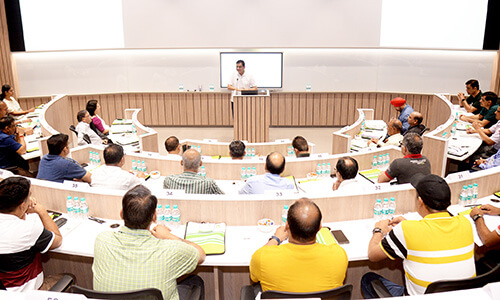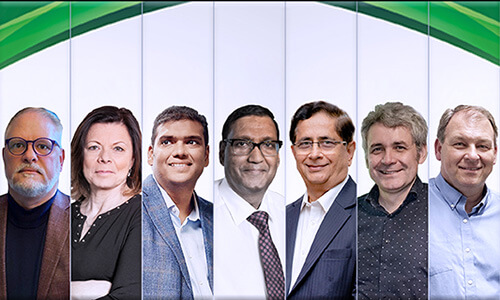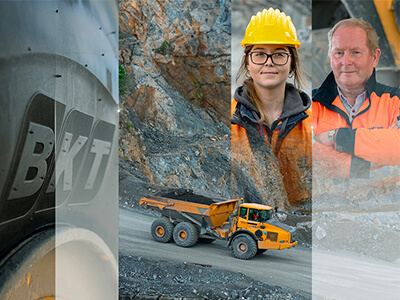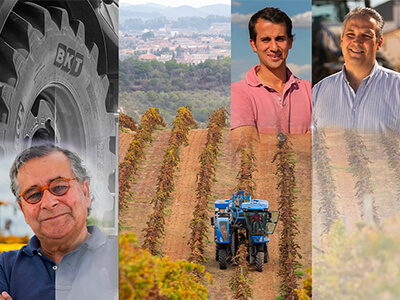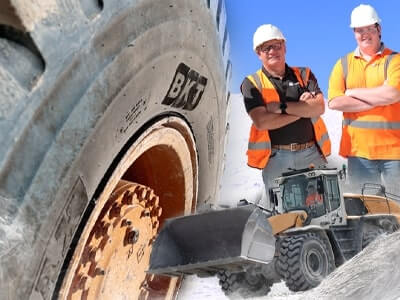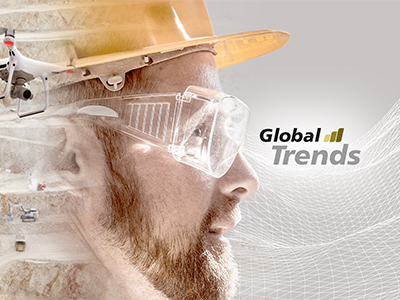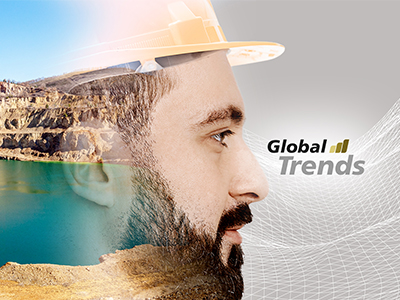Hello, and welcome to Global Trends – the digital talk show covering YOUR industry, with a purpose to entertain and inform. I’m Saana Azzam and I’m your host.
We’ve had a terrific response to the first three episodes. So far, we’ve looked at three topics: Technology, Automation and Robotics; Sustainability and ESG; and Alternative Energies, and now it’s time to wrap up our four-part series with the final topic.
But first, remember to engage with our social media channels, as always, and share your thoughts and reactions.
For episode four we’ve turned to a trend that’s by no means unique to our sector. Indeed, it’s one of the most hotly talked-about topics around the world, exercising the minds and motivations of politicians and citizens alike.
In every industry on the planet, what everyone’s trying to work out right now is how we decarbonise our economies. How do we reach that net zero goal? What does each sector need to do?
We know what we have to do; now we need to make it happen. Let’s ask today’s guests how we can achieve mining net zero.
As usual, we’ve got two guests joining me in the studio today, for our final episode of Global Trends.
So, onto our first guest. He is Senior Principal of the Climate Aligned Industries programme at the Rocky Mountain Institute. Based in the US, the non-profit RMI has been an advocate for energy efficiency since its inception 40 years ago – something that the emerging climate crisis of the last few years has only served to amplify.
Please, welcome to Global Trends Thomas Koch Blank. Thomas, won’t you join me?
Thomas, it’s a pleasure to have you join us today.
Thank you.
But before we get talking to him, don’t forget about the opportunity to follow the episode on our social media channels, log in, share your thoughts and comments, and discuss it with our viewers around the world.
So, Thomas, let’s begin with the big question: why is it so important that we seek to decarbonise the mining sector?
Well, mining and mineral extraction’s a vital element in the modern economy, we are still growing globally because of economic development and population growth, and I think as we do that, we are going to accumulate minerals into the economy.
Yes, as much what I would like to discuss that, our second guest is going to tell us more about that specifically!
Ok, that’s true, and I think while these materials are in theory infinitely recyclable the recycling does not cover the overall growth so we will need to have more minerals especially to cover the materials required for the energy transition.
Now, the mining industry needs to shout more about this issue, doesn’t it? And the industry’s changing: we’re not so focused on something like coal – which is not infinitely recyclable – and now the attention is on things like rare earth metals. I would say it’s quite a paradigm shift.
Well, I think in general you can divide the materials we dig out of the ground in two categories: it’s the “consumables”, so a lot of the energy come out of these are - you know coal, oil and gas – are extracted and then used; and then you have the minerals that are extracted and put into infrastructure or products and they can arguably be recycled and re-used and I think it all depends on the cost and the accessibility but also the value of the product. For example, take a cell phone, there is more gold in a cell phone per kg of phone if you if you like than there is per kg of ore coming out of the ground.
Do you think decarbonization is achievable in mining? Or is that a bit too unrealistic?
I don’t think it’s at all unrealistic. Recycling works with mining just as energy efficiency works for the energy system. It’s arguably the cheapest way of reducing the total energy consumption for the whole value chain.
When we’re talking about decarbonization in mining, do we more accurately need to talk about decarbonization of mineral usage, rather than just mining – so we include the whole life cycle?
I think that’s accurate. In a stable economy, where we’ve stopped growing – if we ever get there – I think you can imagine an economy that is in theory just recycling and living on existing minerals in the economy.
So, to your point, the emissions associated with mining is not only about digging material out of the ground; it’s also about transforming the raw material – the ore – into pure minerals and that process is quite energy efficient. So, if you recycle, you skip that step because the mineral has already been purified if you like.
That’s quite fascinating. Anything more you would like to add on this topic?
Well, you obviously have the emissions in the mine; and good news is that there are technological solutions also there.
Fantastic! And so that was what I was going to come on to. What we can do is cut back or eliminate the carbon we are using to get it out of the ground; isn’t it?
Yes, I think that is right. If we are looking at steelmaking, for example, of course there’s some policy or quite a lot of policy trying to both reduce the total amount of steel used in the economy but also increase the amount of recycling – and both these activities or policy interventions are from the mining perspective not great for business because it means less products – you know, there is a lot of markets that you can sell to.
For all this, again from the mining perspective I think it is quite critical to reduce the whole supply chain emissions because this means that you will have a long-term sustainable market opportunity where you can bring your product to the market without adding more carbon emissions.
So, with that all going on already, if electrification is already so widespread, what more can be done?
The biggest consideration is probably there are a lot of these operations are off grid as you say so they are in remote locations and when you buy renewables for these operations you are very exposed because you are the single buyer of electricity from a single producer. And that’s not as resilient as many, you know, conventional systems are. So that’s a bit of a barrier; but again, these trucks are also not easily electrified and it has to do with a duty cycles of the trucks so you want to have them running as much as possible and not standing still charging the batteries but also the weight of the batteries so every ton of battery you put on it means that you can carry one less ton of rocks with the same truck.
So, we’re looking for better battery technology?
Better battery technology would help but that unfortunately would not be sufficient.
But there are a couple of solutions coming up: there is hybrid solutions where you combine battery electric drive trails with traditional engines, and you can even combine them with what’s called overhead power supply so on the really power intensive stretches going up the ramp, for example. Another alternative is drop-in fuels so you can do biofuels to the extent you can get biofuels, or you can do synthetic fuels – and I think the third category of solutions here is hydrogen.
Again, presumably the hydrogen can be developed from renewable energy sources?
Absolutely – and I think especially for off grid operations that is true because the variable outputs from solar and wind fits very well with the hydrogen production which is more flexible than the power consumption in the mine. So, it actually is easier to electrify through hydrogen than electrify directly equipment in the mine.
Excellent. And what’s the timescale to achieve these goals? 2030, 2040, 2050 – when might we reach net zero?
So, the good news is that technology is known so for all of these options I think there is high degree of enlightening on what technology needs to be deployed; and also, these solutions are being tested at large scale and we have companies like Fortescue who have committed to not using any fossil fuel by 2030, already. And a lot of other mining companies committed to 2040 targets significantly before the 2050 timeline so I think there is a question of course of basically goes down to how fast we can replace existing equipment so that there will be a bit of a difference between new mining operations and transitioning existing ones.
Fantastic insight. So, we have reached the ‘Ask Away!’ segment of the program; to close the interview we pick a question from our social media channels. And Thomas here it is: is there any legislation in place to force decarbonization of the mining sector?
So, the short answer is no, because the mining industry is global, and there is no institute that has jurisdiction globally. So, regulations that are imposed on one region will not be major necessarily on other regions. I think there are two policy developments that are close to a global policy and one of them is a consumer-based policy. The two things you can do is to implement policy on the demand side; or you can subsidize clean energy and mandate the use of that instead.
And that means that everything that is imported in Europe needs to comply with the threshold of emissions and that technically makes it a global policy because everyone needs to comply in order to sell into Europe.
Thomas, I know there’s so much to say and so little time! Thank you, Thomas, that’s an interesting point on which to conclude.
Stay with us, won’t you – we’ll pick up on some of those points again, when we wrap things up with an end-of-episode discussion. Let’s move on.
Thomas talked of the importance of recycling. It’s a great topic for our second guest. He is the Director of Mining at Nth Cycle, a technology start-up that aims to solve a growing problem: how do we adopt our breakthrough technologies - including electric vehicles that rely on complex battery chemistry, wind turbines and consumer electronics - without the monetary and environmental cost associated with extracting metals and minerals?
Alexander Allen, please come and join us on Global Trends!
Alexander, warm welcome to the show.
Hi. Thank you for having me.
Now, we’re keen to hear more – Where does your technology fit in solving this problem?
Well, thanks to your team for having me today. Nth Cycle was created when we identified the need for new means to provide for the ever-increasing demand for critical metals. We are looking to redefine how we extract metals, and we use metals including those that are already in circulation.
Our company was named because wanted to keep critical metals in circulation forever, we are using them for an N number of times. Our CEO saw that there was a problem with the energy transition; currently extraction and refining require a huge amount of energy through large scale and unsustainable processes.
Our goal is to redefine metal extraction by localizing our process and reducing the amount of energy used in refining those metals. Whether we take is from the ground in traditional mining or we recycle – which we call upper mining – we can only find ourselves shipping materials long distance overseas for further refining.
Our core technology is called the Oyster and uses a process we have named ‘electro-extraction’: this essentially combines seven refining stages to one and allows to target and extract specific metals to produce high purity products.
Wow! That’s incredibly exciting: so you are raising the quality, origins and environmental credentials of these important metals. Is that right?
Yes, exactly. At the core of this is understanding where all these metals are sourced. For example, currently nearly 85% of the nickel that is being used for the energy transition is sourced from Indonesia, which is then refined in China. This creates concerns for Western users due to supply security; the distance the metal is being transported and as you say the environmental and social credentials are procuring that metal. This is a similar story for cobalt as well; this is led by the US and EU saying we need to promote transparency, sustainability and security to our supply chains.
Hitting the target on political and environmental scores, but what about economics?
Well, our system can be deployed on site at modular scale, and it can be on cost parity with the large facilities that are centralized overseas. Our business model is fairly simple – we generally look at own and operate our assets and then charge a fee to our partners to process the materials. We create close loop supply chains while providing reductions in transportations, supply chain timing and of course greenhouse gas emissions.
All this while upgrading commercial facilities to identify new areas of monetization including waste streams.
Excellent. Does this present an opportunity to develop more, but less intensive, mining operations? So, we could extract on a smaller scale, with less impact?
Absolutely and reduction is the key piece here. We want to reduce the number of steps needed to refine feed stocks and that’s how we’ll reduce waste and energy and the carbon footprint.
This technology now makes it worthwhile to invest in small assets, assets that have gone untapped because it hasn’t made sense to invest in processing facilities for short term projects. And then there is waste: waste is very distributed. When you dispose of a phone or a laptop it is a challenge to transport them to central locations for processing; so flexible chemical refining capacity is what the world really needs. We can reduce greenhouse gas emissions by over 90% compared to traditional mining, and we can reduce carbon emission down to 44% compared to traditional recycling methods in our process.
Your technology works on traditional raw material, it works on waste product, it works on post-consumer waste?
Absolutely, we are trying to use every resource that we have, and to do as near as possible to the ultimate end use of that material.
So, where do you go from here? You’ve proven the technology, it works – so what’s the plan?
So, our first partners have been in the scrap recycling space. We are working to refine EV batteries and consume electronics in the form of black mass to produce very high purity products such as Nickel, Cobalt, and HP.
We are in the process of partnering with OEMs to refine metals for them as part of a close-loop supply chain, with a heavy emphasis on recycling their products and upgrading materials for them to reuse as direct fits stocks in the process.
And the only input is electricity?
We’ve narrowed down the electric structure process to use electricity and water. And actually, most of the water we can recycle in the process.
And the timescale?
This is already in progress at commercial scale for scrap this year and we are looking at a few more stages of R&D for mining and refining.
What’s the limit? Is there a limit?
We have developed a tech to accept the widest possible of materials, the widest funnel of materials, unlike current technologies that cope with only a narrow band.
However, we can’t process every metal in the periodic table, so we have focused on the critical metals.
Some components that we receive are also very heavily mixed: cell phones for example, every brand has a different make-up and generally cell phones can have more than 75 different metals in them, so that makes it harder to process.
But we also need to pre-process our fit stocks; we can’t just throw a car battery into our system; we have to mechanically process it beforehand.
Grinding up circuit boards?
Yes, we do that. Our partners generally collect, disassemble and shred the materials and then send it to us. Then we put it into a solution, and put it through our system, and on the other side we pull out metal precipitins.
There’s very little residual waste. We can pull out the graphite from batteries, the lithium, the manganese – actually the main waste product is just aluminium and perhaps 5% of the fit stock we receive is considered waste for us.
Interesting. In my mind it sounds a bit like ‘unbaking’ a cake?
Exactly! I like that analogy.
Ok perfect!
Alex, let’s finish the interview with our ‘Ask Away!’ session by asking you a question from the social media channels, are you ready?
Yes.
Alright. what does your technology mean for the future of mining?
Well, it doesn’t mean we do not have to mine any more, but it will help today’s mining companies go about their business differently.
So, technology like this provides them with a future? They can change the way they produce the same kind of materials they do at the moment; I suppose?
Yes, we’re already seeing some of that happening. We think this is the future of mining. Companies are more open to innovation, especially when you can show them that there’s value in the proposition, while reducing carbon emissions.
That’s a great way to finish, thank you!
So, there you have it. It’s difficult, isn’t it, when we’ve got only a few short minutes with each of our guests, particularly on a topic that’s as labyrinthine as net zero!
It’s that time in the show when we start our ‘Trends & Talks’ discussion. I’ll welcome back Thomas and Alex to join us in the studio!
We also have one more guest today: Bruno Santos. Bruno is a BKT Field Engineer for OTR, with responsibility for South-West Europe.
His extensive knowledge in tire industry products and services, their applicability and market needs, allowed him to take part of multidisciplinary teams who outlined a vision and consequent strategy to create value for the organization.
Bruno, come and join us! Bruno, warm welcome to the show.
Thank you.
Gentlemen, welcome back. So, I assume you’ve been listening to my interviews with Thomas and Alexander, Bruno and I bet you have found them just as interesting as I did.
So, what do you think, in general, about what they had to say? How can companies embrace this move towards net zero?
It’s a good question! There are initiatives both on the OEM side and from users, but it’s those on the OEM side that – from our perspective as a tire manufacturer – have more impact.
But let’s look at the general picture. Rather than attempting to find ways of electrifying the really big dump trucks, they’re instead downsizing dump trucks. It’s been described as moving from elephants to ants. In this way, battery weight and capacity are less of an issue. Plus, you get a larger fleet, which collectively means less downtime and more productivity – which is what all the mining companies want. It’s a game-changer for us – smaller machines mean smaller tires, different technologies.
Or you can go for electric drive – still using a diesel engine, but rather than direct drive to the wheels, you use it to turns an alternator that powers electric wheel motors. That reduces fuel use, reduces carbon footprint, and with fewer overall mechanical components, you’ve got another low maintenance machine that improves truck availability. Add in a trolley assist system – where the electric power is supplied by overhead lines, just like a train or a tram – and you get the best of both worlds.
Bruno, you mentioned the end-user initiatives too.
Yes, there’s a really good example – I know this one because we’ve got BKT tires in some of their plants! It’s a joint initiative between EQIOM, one of France’s biggest building material suppliers, and Air Liquid – they’ve built the first carbon-neutral cement plant in Europe. It captures, then liquifies, the CO2 produced, before pumping it into empty oil wells in the North Sea. They expect to capture around 8 million tons of CO2 during the first ten years of operation.
OK, that’s interesting – it’s good to see those initiatives at the processing stage too, not just in the extraction phase.
Alex, you yourself are offering companies a move towards net zero by tapping into these valuable waste streams. Are there other ways your potential clients and partners can speed up their net zero transition?
This is already happening and it’s happening at an ever-increasing pace. I think the key things to embracing a move to net zero are investment and adoption of new and innovative technologies in order to decarbonize processes and products.
But there also needs to be recognition of accountability – the benefits of net-zero will depend on our ability to promote people-centered transitions where not just the planet benefits, but people and communities benefit socially, environmentally and economically. Companies need to give people the opportunity to get behind change.
Some useful insight there Alex, thank you.
OK, Thomas, over to you. You yourself have completed a study on decarbonizing heavy haul trucks, I think?
That’s right, I have done that. I think we looked in particular at the difference between incremental technologies and technologies that take emissions down to zero. And also, from the perspective of what’s required to achieve the 1.5-degree global warming target, and that means that not only it is important to achieve net zero by 2050 but we also need to have significant cuts close to 50% reduction already by 2030.
Well, there you go – three enthusiasts of net zero, clearly! I’d love to let you continue the discussion, but there we’re going to have to leave it – our time has run out. Thank you, all three of you – Thomas Koch Blank from Rocky Mountain Institute; Alexander Allen from NthCycle; and BKT’s Bruno Santos. It’s been a pleasure hearing from you all.
Yes, for the last time in this series of Global Trends, it’s time for Quiz You Up. Do you remember this? We asked you a question on social media, after episode 3, when we looked at Alternative Energies.
And the question was: What’s the chemical process needed to make HVO?
And if you are ready for the answer, it’s coming shortly. The answer is: Hydrogenation. So, for those of you who got it right – congratulations, well done! Especially to anyone who got all three of our Quiz You Up questions right!
And so now, it’s time for the last question of the series.
The question is: which commodities contributes to the mining sector’s total emissions from least to most?
Of course, we don’t have another episode in which to give you the answer, but don’t worry – we’ll post the answer on our socials. Keep a look out – I’m sure some of you will make it a perfect quartet of correct answers!
And there you have it. The end of another series of Global Trends. We’ve been fortunate enough to hear from twelve guests, across four episodes. Together, they’ve informed and enlightened, talking about some of the most relevant, the most important, the most pressing topics facing this industry. To all our guests, across all the episodes, thank you – we couldn’t have done this without you.
And to our viewers– thank you for embracing this series as you have the other series! We’ve enjoyed inviting you into our virtual master world, and your interactions with us on social media, and we hope you really enjoyed exploring these topics with us.
From all of us at Global Trends, thank you, and goodbye!
